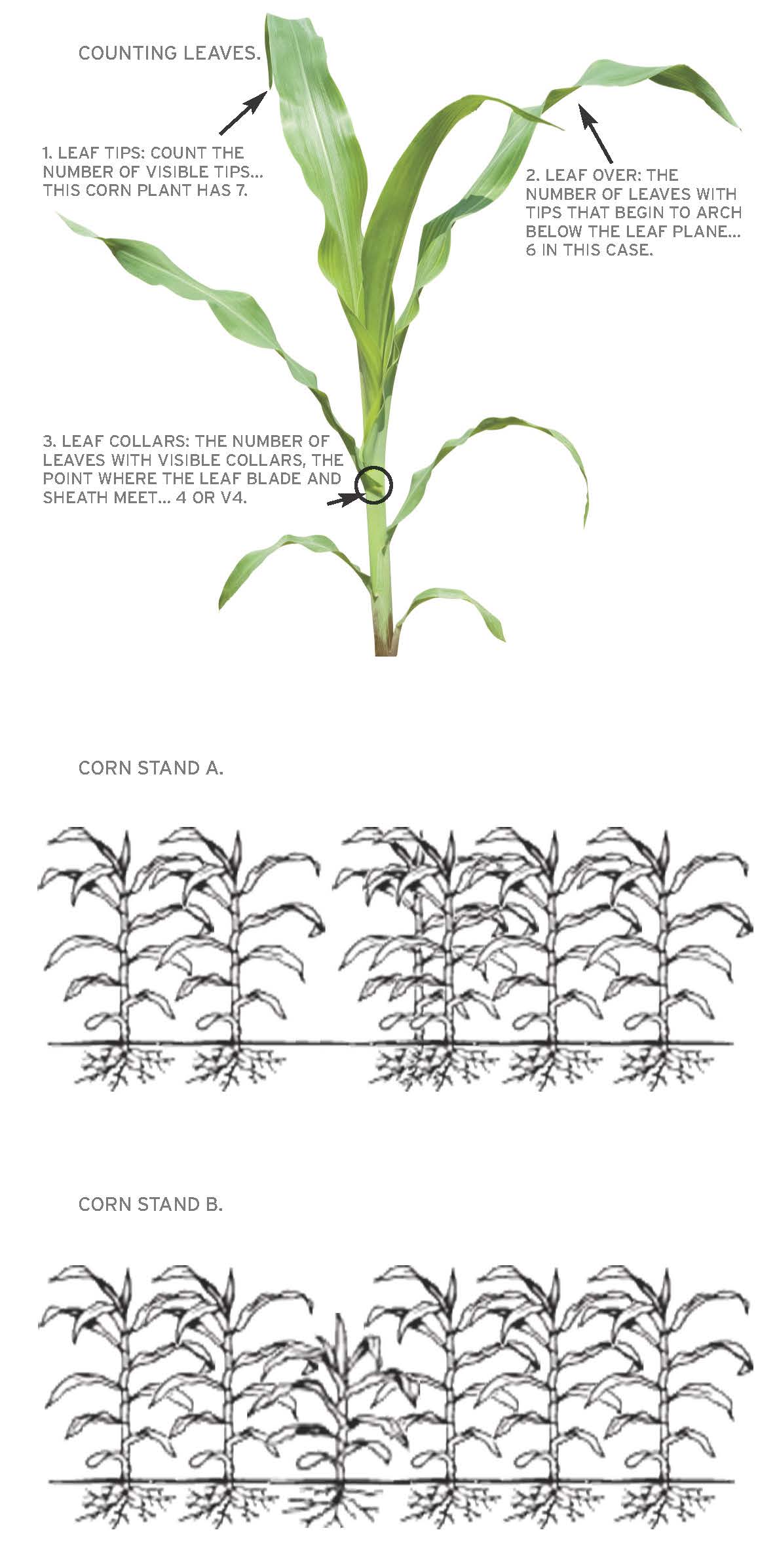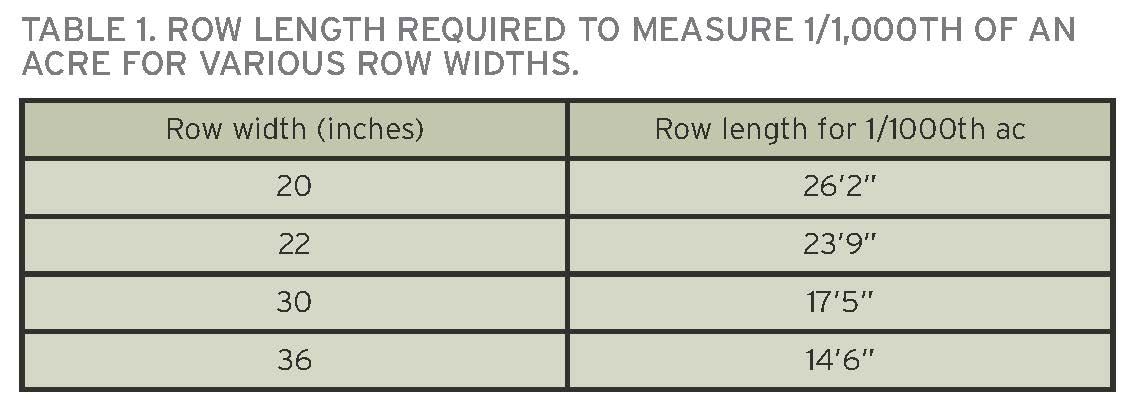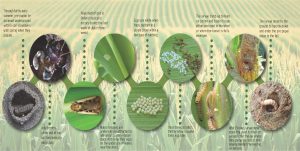Cropside: Corn stand checkup
AGRONOMIC INFORMATION FROM ONTARIO'S CROP SPECIALISTS

COUNTING LEAVES
There are several ways to count corn leaves. While this seems like a mundane detail, ensuring you and your agronomist are communicating the same leaf stage can be important, especially when management practices or crop protection products require specific leaf stages for crop safety. In Ontario, the leaf-over counting method is commonly used on product labels. A quick review of all three methods is shown on the left.

COUNTING PLANTS
If you’ve had plant stand issues (crusting, pests, frost), or would like to compare emergence to what was dropped by the planter, a quick population evaluation method is to count the plants in 1/1,000th of an acre of row length (Table 1). Using a measuring tape, count the number of plants for your given row length and multiply the count by 1,000. Counting a couple of rows on either side of the tape measure in several different spots will give an idea of what the average and variability in final plant stand may be.

COUNTING ON UNIFORMITY
Early vegetative stages provide an opportunity to evaluate emergence and plant stand uniformity. In lieu of a perfect stand, which of the following two corn stands would be preferable, “A” where two plants in six have been planted as doubles, or “B” where one plant in six has been delayed by two leaf stages?
Ontario research (Liu et al, 2004) demonstrated that the yield potential of stand “A” was 99% of a stand with uniform spacing and emergence, while the yield potential of stand “B” was 95% of a uniform stand. If you notice plants that are delayed by a couple of leaf stages, take some time to investigate if there is an obvious reason why (planting depth? seed to soil contact? trench closure? etc.). •


























